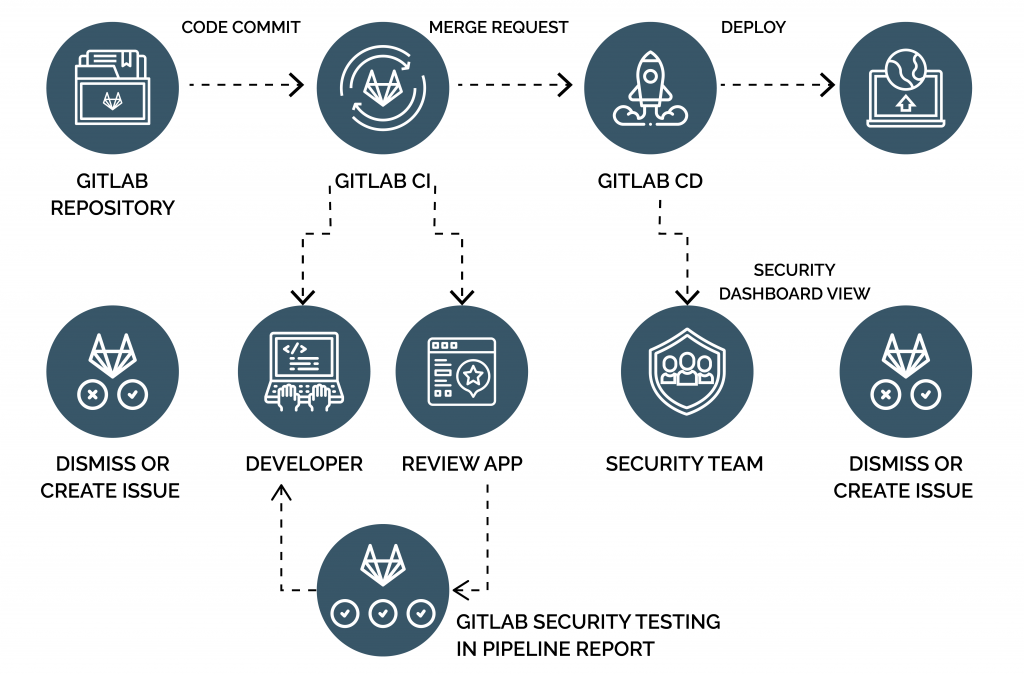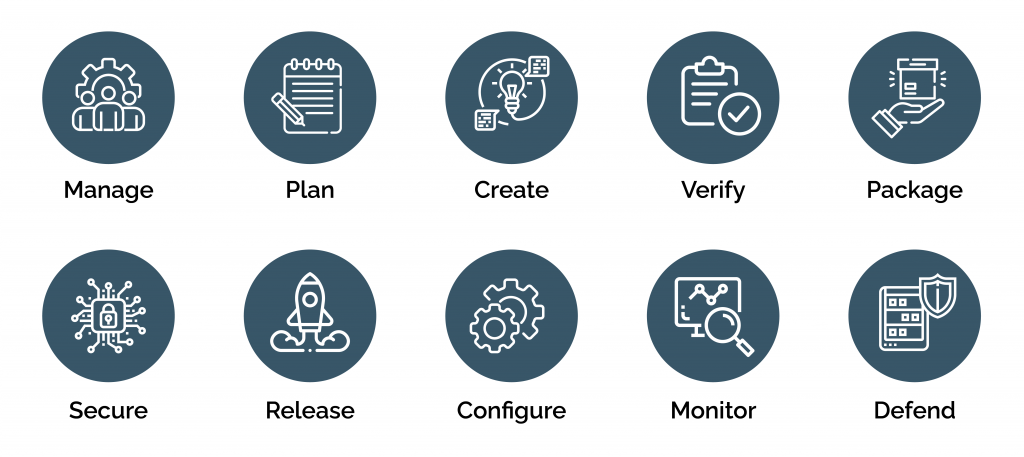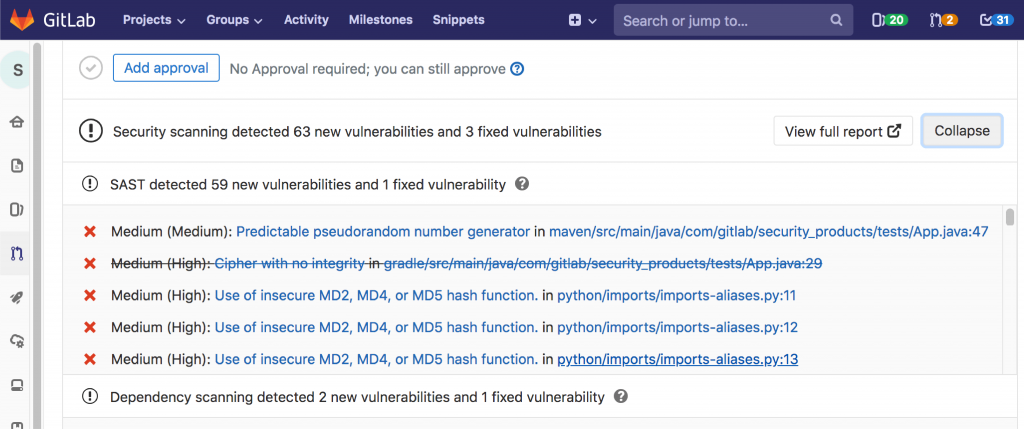A successful DevOps implementation has two cornerstones, Continuous Integration and Continuous Deployment. Enterprises can reap the bottom-line benefits of an optimized CI/CD pipeline by automating their build, integration, and testing processes. Conventional IT dev processes involve security at the end of the application or software stack. To break down development and delivery process silos and ship software faster and more securely, securing CI/CD workflows has become necessary. Governance shortcomings and fragmented toolchains also risk the continuous release and deployment automation for applications. Thus, DevSecOps is the natural next step of DevOps that converges development, operations, and security teams. The missing link in CI/CD pipeline optimization helps promptly manage persistent security threats in the enterprise ecosystem.
What is DevSecOps?
The DevSecOps process integrates IT security practices into your application’s entire life cycle. It factors application and infrastructure security considerations from the start without pushing the security team’s role to the final development stage. It is used to establish the following goals.
- Empower the Development Team to optimize CI/CD security and automate remediation through the improved visibility of vulnerabilities, risks, and code coverage.
- Prevent pipeline vulnerabilities using the incident history from InfoSec.
- Maintain a Trusted Repository that is threat-free.
- Verify functional stability, security & compliance before GO-Live.
Why DevSecOps Integration Matters
- It tests every piece of code upon commit for security threats at optimized costs.
- The developer can remediate while working on their code or create an issue with a single click.
- The security team can monitor and manage lurking vulnerabilities captured as software development by-products.
- A single source of truth can help with remediation collaboration among developers, operations professionals, and security experts.
A single tool minimizes integration and maintenance costs throughout the DevOps pipeline.

With GitLab Secure, businesses can continuously secure high-velocity DevOps. GitLab Secure covers the entire DevSecOps Cycle from Manage to Defend in a single application.

- A successful DevOps implementation has two cornerstones, Continuous Integration and Continuous Deployment. Enterprises can reap the bottom-line benefits of an optimized CI/CD pipeline by automating their build, integration, and testing processes. Conventional IT dev processes involve security at the end of the application or software stack. To break down development and delivery process silos and ship software faster and more securely, securing CI/CD workflows has become necessary. Governance shortcomings and fragmented toolchains also risk the continuous release and deployment automation for applications. Thus, DevSecOps is the natural next step of DevOps that converges development, operations, and security teams. The missing link in CI/CD pipeline optimization helps promptly manage persistent security threats in the enterprise ecosystem.
What is DevSecOps?
- The DevSecOps process integrates IT security practices into your application’s entire life cycle. It factors application and infrastructure security considerations from the start without pushing the security team’s role to the final development stage. It is used to establish the following goals.
- Empower the Development Team to optimize CI/CD security and automate remediation through the improved visibility of vulnerabilities, risks, and code coverage.
- Prevent pipeline vulnerabilities using the incident history from InfoSec.
- Maintain a Trusted Repository that is threat-free.
- Verify functional stability, security & compliance before GO-Live.
Why DevSecOps Integration Matters
- It tests every piece of code upon commit for security threats at optimized costs.
- The developer can remediate while working on their code or create an issue with a single click.
- The security team can monitor and manage lurking vulnerabilities captured as software development by-products.
- A single source of truth can help with remediation collaboration among developers, operations professionals, and security experts.
- A single tool minimizes integration and maintenance costs throughout the DevOps pipeline.
Enterprise DevSecOps Integration with GitLab Secure
With GitLab Secure, businesses can continuously secure high-velocity DevOps. GitLab Secure covers the entire DevSecOps Cycle from Manage to Defend in a single application.
A single sign-on eliminates the need for separate tool access requests, reduces context switching, and improves cycle time. GitLab Secure improves quality, security, and developer productivity by,
- Offer actionable vulnerability findings through application security testing and remediation. This helps security professionals resolve and manage vulnerabilities easily.
- Add Cloud-native Application Protection and monitoring capabilities to secure production environments.
- Ensure Policy Compliance and Auditability through GitLab’s end-to-end transparency, MR approvals, compliance dashboard, and standard controls.
- Provide SDLC Platform Security covering all the software stages.
GitLab Secure Features
- Each of the following features displays vulnerabilities and analysis results in line with each merge request for immediate resolution.
Static Application Security Testing (SAST)





